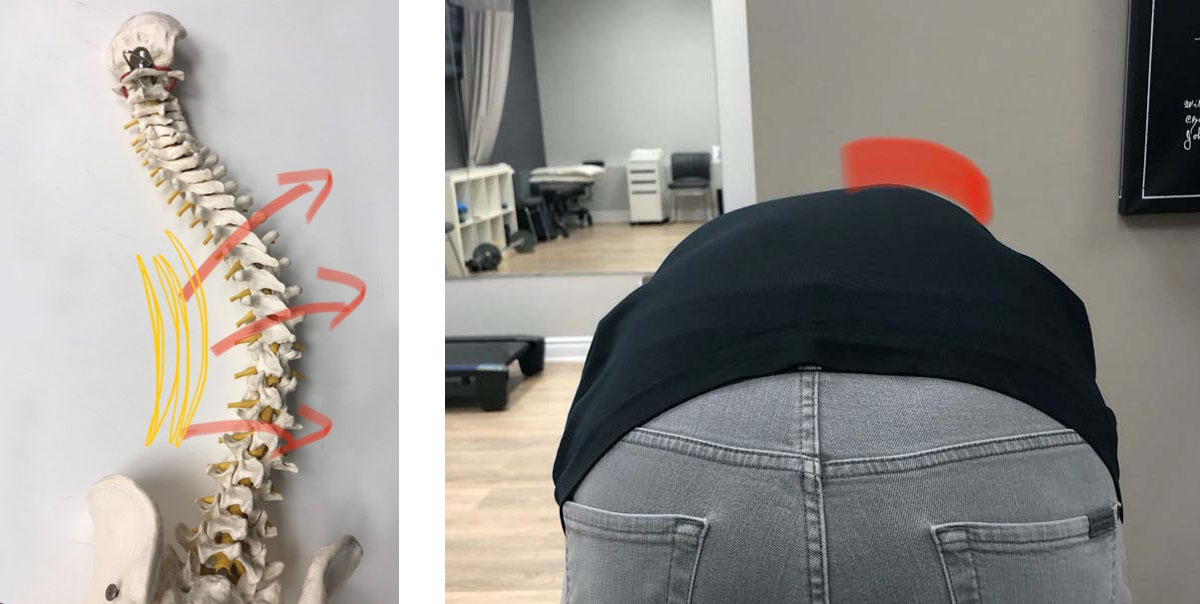Adam’s Test (Screening for Scoliosis)
By: Dr. Kevin McIntyre B.Kin., DC
When a patient comes to our clinic for the first time, we conduct a thorough history to get an idea of what may be causing a patient’s pain. This is followed by an orthopedic examination, which is a series of movements and manual tests that challenge the area of complaint. Unfortunately, not all orthopedic tests are reliable, so we must interpret and make sense of the findings very carefully. One test that fits this description is the Adam’s test, which is simple and somewhat reliable but also necessitates a careful interpretation of the result.
Adam’s test is a simple screening test for scoliosis. Scoliosis is a curve in the spine and is very common. Perhaps the most important point in this blog is to understand and appreciate that mild curvatures are very common, often considered normal and normally don’t cause any pain or dysfunction. In other words, a positive Adam’s test is not usually something to panic about. Perhaps the primary reason for writing this blog is because early detection of scoliosis in kids is important, and this test is a simple one that parents can help with.
How to perform the Adam’s test
When the spine curves as it does with scoliosis, the spine moves in what we call a coupled motion. It rotates as well as curves laterally. When there is a curvature, the ribs often give us the clue that the spine isn’t perfectly straight. Adam’s test is performed by simply having the patient bend forward and then looking at the spine and ribs from behind to see if there is a difference in height. If you see a clear difference in height, it suggests the spine is rotated and therefore curved, and perhaps a closer investigation is warranted.
Remember that this is a screening tool, so it is not perfectly accurate or reliable. Also, keep in mind that we need to interpret the results carefully. A mild curvature in the spine is extremely common and not typically anything to be concerned about, especially in someone who is finished growing. If it is a child or an adolescent in their growth years, an x-ray is sometimes indicated to clarify the severity of the curvature. Depending on the extent of the curve, a follow-up x-ray may be performed in six months to see if the curve is stable or whether it is progressing. Curvatures over twenty degrees in a young patient with many growth years ahead of them typically require referral to a medical specialist to discuss the best plan of management. Perhaps it can be said that most positive Adams tests in day-to-day practice require no intervention. At most, these patients may benefit from some home exercises to keep the muscles around the spine strong and the joints mobile.
Parents are not responsible for diagnosing or managing scoliosis in their child. The Adam’s test is simply an easy screen that parents can do with their kids to see if anything looks abnormal. Early detection of scoliosis is paramount to a successful outcome. If a curvature is suspected, a health professional qualified to diagnose and manage scoliosis can help clarify the finding and whether any further analysis is warranted. Again, a slight curvature is often considered normal, and most cases do not require intervention. Perhaps it will be comforting to know that Usain Bolt, the fastest man on the planet, has a significant scoliosis. It clearly hasn’t held him back from achieving such an impressive feat!








